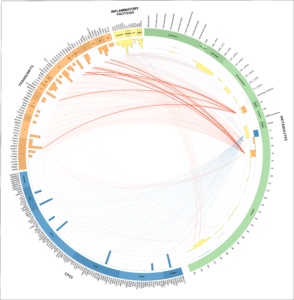 STOP is working hard to learn more about the molecular signature of childhood obesity. Initial analyses have integrated “omic” information at four biological layers (epigenetic marks, gene transcripts, proteins and metabolites) to understand the biological mechanisms associated with birthweight in four European cohorts (INMA, Environage, Piccolipiu and Rhea). Both low and high birthweight are risk factors for the development of childhood obesity and the present analysis identified novel molecular features and pathways that highlight the importance of cholesterol biosynthesis. The work also continued to develop the methodologies for multi-omic integration in studies of child development.
STOP is working hard to learn more about the molecular signature of childhood obesity. Initial analyses have integrated “omic” information at four biological layers (epigenetic marks, gene transcripts, proteins and metabolites) to understand the biological mechanisms associated with birthweight in four European cohorts (INMA, Environage, Piccolipiu and Rhea). Both low and high birthweight are risk factors for the development of childhood obesity and the present analysis identified novel molecular features and pathways that highlight the importance of cholesterol biosynthesis. The work also continued to develop the methodologies for multi-omic integration in studies of child development.
We are extending this approach to post-natal growth and childhood obesity. Repeat height and weight measures have now been harmonised across five cohorts to track growth trajectories and onset of obesity. A literature review has been conducted to identify candidate epigenetic and metabolomic features that are associated with, and may predict, obesity in children. As a first step we aim to validate these candidate features in the STOP cohorts and then further investigate their role in obesity risk.

